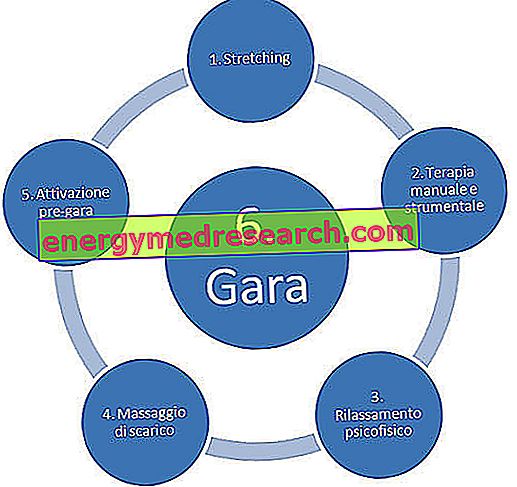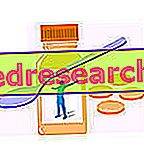Article by Samuele Tedeschi - Athletic trainer and motor sport pilot therapist
The day of the race has always been considered the litmus test, where the rider and the athletic trainer concentrate all their efforts for one purpose, " victory ".
Depending on how you behave in the race weekend you can get the best result or the worst result. Because ignoring the programming followed throughout the season, it will be very important to get prepared physically and mentally for the day of the competition, or risk being tired or unmotivated.
The possibilities that can be reached at the end of the day and that the athletes know well, are two:
- finally getting the results so sweaty
- lose or make an anonymous race
It will be the task of the preparer to ensure that the pilot reaches the circuit to the best of his ability to win the first option. In fact, the work to be carried out by the trainer must include the hydro-saline integration program, the psychological motivation of the pilot, aimed at facing the race with the right mental preparation, the discharge of the muscles and the elimination of tensions derived from driving during the free practice and qualifications. In certain competitions, the filter function is also added, whose function is to " filter " all the information directed to the pilot to avoid that the whole set of communications "from" and "towards" him becomes too burdensome and deconcentrating to the purposes of the tender.
It is therefore clear that the algorithm for winning competitions is complicated and that the jobs to be performed during the race weekend are many; in the article, which will list the guidelines, the phases that make up the pre-race will be outlined.

Fig.1.1 The tasks of the athletic trainer during the race weekend
Integration
Water is essential to ensure the maintenance of an optimal state of hydration. In fact, a liquid loss of 2% of body weight is sufficient to drastically decrease physical efficiency and generate an obvious sense of exhaustion! Restoring water and electrolytes has the function of preventing the appearance of muscle cramps and mental and physical fatigue, as well as preventing dehydration. Dehydration that often occurs in motor sports, precisely because of the personal protective equipment used - such as fireproof suits and leather suits - and the hot / humid climate present on the race tracks, which greatly increase sweating and the dispersion of body fluids .
The most suitable type of drink to be taken during the driving activity should be strongly hypotonic, in order to speed up gastric emptying and quickly restore liquids inside the cell (hypotonic drinks are those whose concentration has a pressure osmotic lower than that of plasma and the osmolar load of sugars and mineral salts is not unbalanced).
Maltodextrins, dissolved in water together with salts with the correct proportion ratio, have the undoubted advantage of maintaining the hypotonic solution, consequently they allow the organism to rehydrate quickly, thus allowing a delay of the energy drop.
It is also necessary not to take more than 500ml of liquids for half an hour, since the body is not able to assimilate more than this dosage and the excess would be expelled with the urine. Even an excess of salts, on the other hand, would cause an osmotic imbalance, with consequent problems in the intestine. Consequently, it is necessary to calibrate the liquid supplement well, bearing in mind that our body expels 1.2 Liters / hour of sweat during sports and that this data can increase depending on the intensity of the physical effort, even if generally for sports like motoring and motorcycling this figure can be defined as reliable.
So to supplement potassium, magnesium and sodium, we will follow the proportion dictated by the following statement: 1 liter of sweat contains 1.5 g of salts, of which 40% is composed of sodium, 30% of potassium is 5% of magnesium, the remaining missing percentages are to be attributed to all the other salts expelled with sweating, but not involved in the performance process. The pilot will weigh himself before each race or free practice and based on the weight detected on the scale the procedure will be the following:
- Remove the weight detected after 1 h of activity from the weight detected before the track activities
- Transform the result into grams
Example :
- Weight before activities 70 kg
- Weight after activities 69 kg
- Result: 70 kg - 69 kg = 1.0 kg = 1000 g
Water to drink during and after activity with salts = 1500 ml
It will be necessary to drink 250 ml of water during the competition or the free trials and at the end of these, at regular intervals of about 15 ', for a total of 1500 ml ; inside the drink will be dissolved 40% sodium, 5% magnesium and 30% potassium, in addition to maltodextrins or other types of sugars with which the pilot is at ease.
To calculate the correct quantity, in the proportion, we must also take into consideration the density of water which is equal to 1 g / ml.
We will thus be aware of how many salts and liquids we will have to reintegrate for that type of race (the procedure must be repeated every time the climatic and geographical conditions of the place in which they run change).
In the hours before the race, already in the morning, the pilot will be asked to perform a slow hydration, about 200-500 ml every 30 minutes with hypotonic drinks; in post-race, on the other hand, hypertonic beverages will be used, ie with an osmolarity higher than that of plasma because they are loaded with nutrients such as carbohydrates given by maltodextrins.
Psychological Motivation
A certain emotional stability, with a relatively low level of anxiety and tension, is a characteristic that generally distinguishes successful athletes . And in a pre-race psychophysical preparation program it is absolutely necessary to take into account the management of the pilot's emotions, since a high level of anxiety due to competition (which can occur both cognitively and somatically) is detrimental to performance and creates negative experiences of inadequacy and lack of confidence in personal abilities.
Furthermore, contrary to what one might think, mental abilities to react to certain situations can be trained. It is the case of the management of emotions deriving from competitions, where often due to the stress of performance anxiety, there is a tendency to focus less on the pleasure derived from competition and to generate a continuous cycle of stressful thoughts that can negatively influence peak performance .

Fig. 1.3 Coaching management pyramid during the competition days
To break this cycle, the athletic trainer will have to carry out a series of training actions for the pilot's brain, thus allowing him to enter the situation called " Flow - flow ", that is a state of consciousness and deep mental activation to lead the rider to be more careful and competitive, as well as completely immersed in the track activity.
It is then necessary from time to time to probe the different emotions of the pilot to modulate and personalize his personal arousal, which consists in the correct psychophysical activation for that sport, for that moment of performance, for that athlete. The modulation of the images that are created from time to time, for example, is at the base of the different mental training methods that will be performed on the competition field. The same goes for the type of attention style that will be presented; that is, based on the moment, the athlete will be more in external mode, with attention to the external environment, or internal with the attention given to his own internal stimuli (muscular tensions, anxiety, heartbeat, breathing rhythm, etc.) ), think for example at the time of the starting grid, where the pilot is very focused on internal stimuli but is continuously bombarded by external stimuli, such as the audience in the stands, the cameras etc .. if at that moment he cannot stay concentrated internally, the subsequent performance will most likely be affected, due to the attention and determination declined.
All these different activation levels, which if not properly managed, will worsen the performance, requiring the help of a specialist like the athletic trainer specialized in sports coaching; because just a few, targeted measures are required to maintain a high level of activation. The first suggestion that I feel I can give, to start immediately trying the right emotions is perhaps the most obvious, but it is what is always more ignored ... listening to the internal messages of our body from which it is possible to understand if during the competitive performance we are either too low or too heavy. The second piece of advice is to keep a diary of one's thoughts, before, during and after the competition and to include the images and sounds perceived in one's mind, this will allow one to create a personal historian (very important in case of victory, because this is so it is possible to recreate the same exact sensations in subsequent races, increasing the chances of success) on which the athletic trainer will be able to study the right mix of sensations, to be perceived by the pilot to bring him to success.
Muscle unloading
Depending on the type of work that is set at the beginning of the season, this part is different from preparer to preparer, therefore below is the classic scheme that I usually use and which includes the work phases carried out on the day of the competition. From personal experience, many pilots prefer to work on muscle stretching and on osteopathic massages, before the race, to favor the action of discharge and have greater freedom of joint movements.
However, it will be the adoption of a routine that gives the greatest benefit to the pilot.

Fig 1.4 The cycle of psychophysical discharge and activation to which the pilot is accustomed for the day of competition.
In the case of limited times, caused by interviews or difficult sets of the vehicle or by other anomalous events, it is useful to concentrate on the phases:
- Stretching (away from the few-hour race)
- Pre-race activation (next to the race)
Since muscles and diaphragm often remain contracted, due to the high concentration used and physical exertion during rehearsals and qualifications, the stretching work is focused on them. The activation, instead, consists in the pre-race massage and in the use of coaching techniques and NLP (neuro-linguistic programming) to change the activation status of the pilot and make him enter the state of " Flow ".
I conclude the article showing how the correct physical recovery curve of the driver should appear in the three days that make up the race weekend. The initial black curve shows that the times are not respected or the correct recovery methods are not carried out, leading to the deterioration of the performance at the qualifying on Saturday. The redhead, on the other hand, shows a correct recovery between Friday and Saturday, worsening, however, before race Sunday, again due to the wrong psychophysical recovery methods. The blue, on the other hand, is the ideal line, where the pilot appears on the starting grid, at his maximum capacity.

Fig. 1.5 Graph "? Πstate of form - recovery time"? with the different recovery hypotheses



